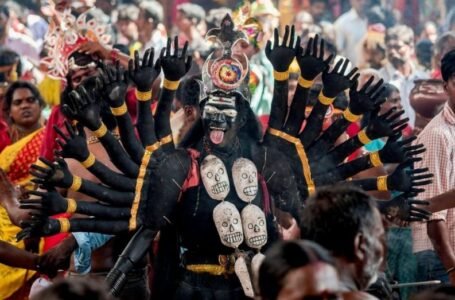Decoding Symbols of Hinduism: Trishul
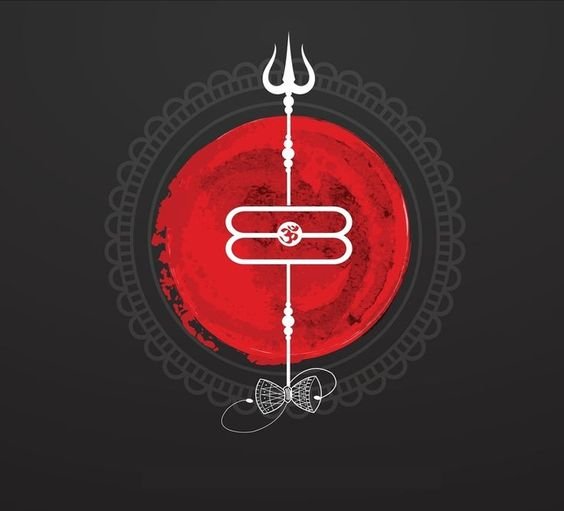
The Trishul, or the trident derives its name from the Sanskrit word Trishula wherein, tri means three and shula means a sharp iron stake. The Trishul is an important symbol in Hinduism. In most of the Hindu iconography and mythology, the Trishul is often associated with Lord Shiva, one of the principal deities in Hinduism. The Trishul, or trident, is a three pronged weapon, and has a distinctive triple-pointed shape. However, its appearance can vary accordingly and depending on the tridents portrayal in Hindu art, sculpture, and religious iconography.

In Hinduism, the depiction and mention of the Trishul can be traced back to ancient Hindu scriptures and mythology. In the mythology the symbol is often depicted as the weapon of Lord Shiva. According to the Hindu scriptures, when the Devas and Asuras churned the ocean of milk to obtain the elixir of amrita, a deadly poison called Halahala emerged from the depths of the ocean. And to save the universe from the destruction the poison would cause, Lord Shiva consumed the poison but held it in his throat, which turned blue, earning him the epithet Neelakantha or the one with the blue throat. According to Vishnu Purana, Lord Shiva obtained the Trishul from the solar matter that Vishwakarma crafted into a trident. The text tells the story of the Sun God who had married Sanjana, the daughter of a divine craftsman called Vishwakarma. Sanjana, wife of the Sun God could not handle the heat he emanated and complained about it to her father, who asked the Sun God to lessen his heat. The Sun God agreed and let a portion of the sun matter to fall on earth, and from this matter Vishwakarma wielded a Trishul and offered it to Lord Shiva.
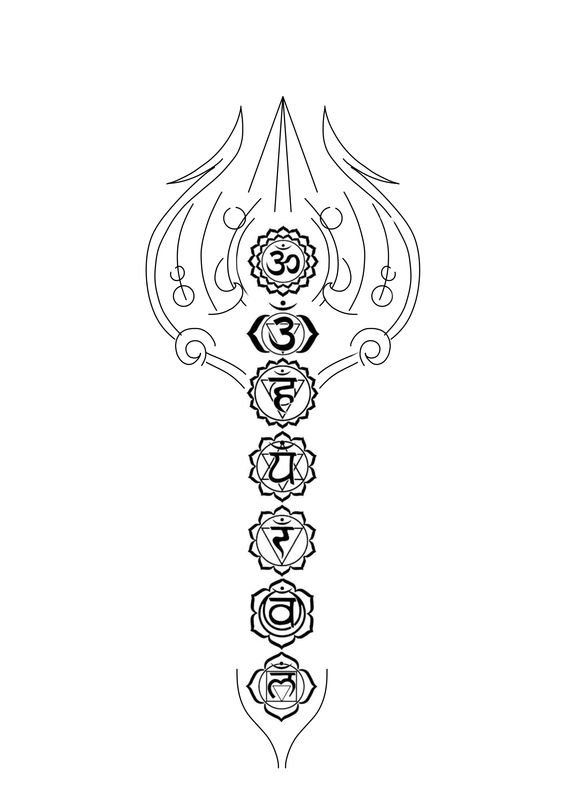
The Trishul or trident typically appears as a three pronged weapon, which has a distinct triple-pointed shape. In Hinduism, the appearance of the symbol can vary, depending on the way the symbol is portrayed in Hindu art, scripture, and religious iconography. The three pointy head of the Trishul holds much symbolic significance in the religion, and is mostly associated with everything in three. For example, the Trishul’s three prongs symbolize the three fundamental aspects of existence—creation, preservation and destruction. The first prong represents the creative aspect of the universe, and of Lord Brahma the creator of the universe. It signifies the emergence of life, consciousness and the unfolding of cosmic phenomena. The second represents preservation and sustenance of the universe from all evils, qualities attributed to Lord Vishnu the preserver deity. It represents the maintenance of cosmic order, harmony, and the perpetuation of existence. The third prong represents the destruction of the universe, epitomized by Lord Shiva the deity of destruction. It symbolizes the cyclical nature of existence, where old forms are destroyed to make room for new beginnings.
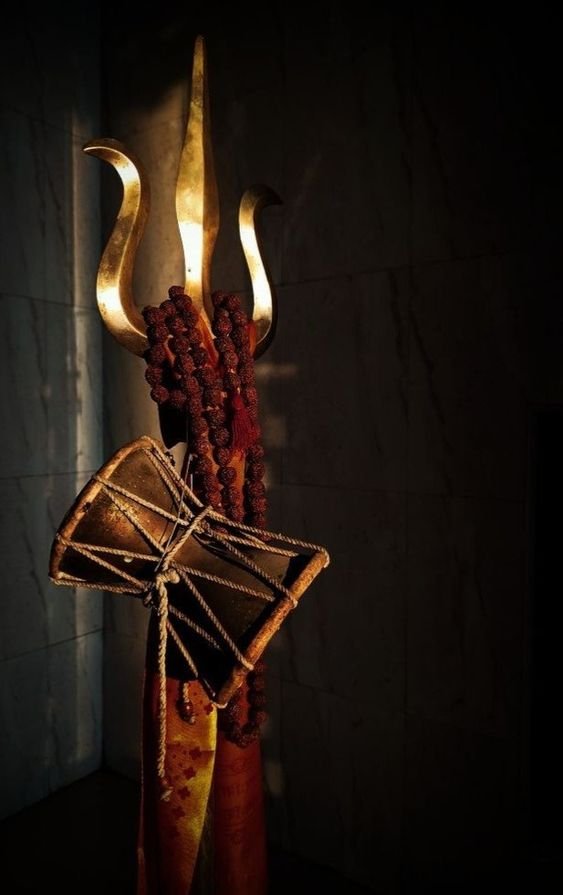
The Trishul also stands for Triadic balance. It symbolizes the balance and interdependence of the opposing forces that are prevalent in the cosmos. The Trishul represents the harmonious balance of three Gunas of nature which govern all aspects of existence. Sattva associated with upward pointing prong, represents purity, enlightenment, and spiritual ascension. Rajas, is represented by the middle prong, signifying activity, dynamism, and the transformative energy that drives the universe forward. Tamas, is the downward pointing prong and symbolizes inertia, darkness and the forces of dissolution and decay. It is believed in Hinduism that Lord Shiva is beyond and above these three gunas, however he controls and exercises the universe through these gunas that symbolize his weapon Trishul. The weapon also symbolizes the destruction of the evil. The believers of the religion believe that the Trishul is associated with triumph of goodness over evil.
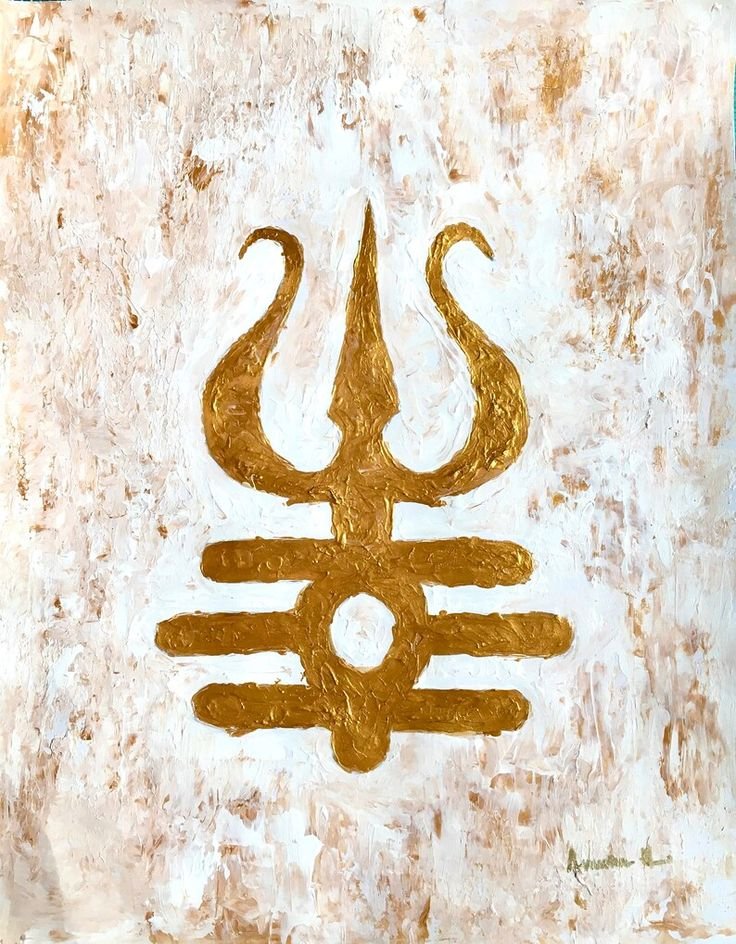
In the mythology, the weapon is wielded by Shiva to defeat the demons and restore the cosmic order. In this way, the three prongs of the trident represent the destruction of the three impurities namely, the ego, ignorance, and selfish action. The first prong symbolizes the conquest of ego or Ahamkara, pride, and individuality. The second prong symbolizes the dispelling of ignorance, delusion and illusion, and the third prong represents the existence beyond the selfish desires, attachments etc. In Hinduism, it is important for the believers and the practitioners of the religion to rise above these impurities in order to achieve spiritual progress and enlightenment. The symbol is also viewed among the believers as a protective symbol. It is widely believed in the religion that the Trishul wards of evil and offers protection from negativity, malevolent forces and hindrances that occur in one’s path to spirituality. The believers faith in the symbol resonates with the Trishul’s power to bless, purify, and protect the devotees.
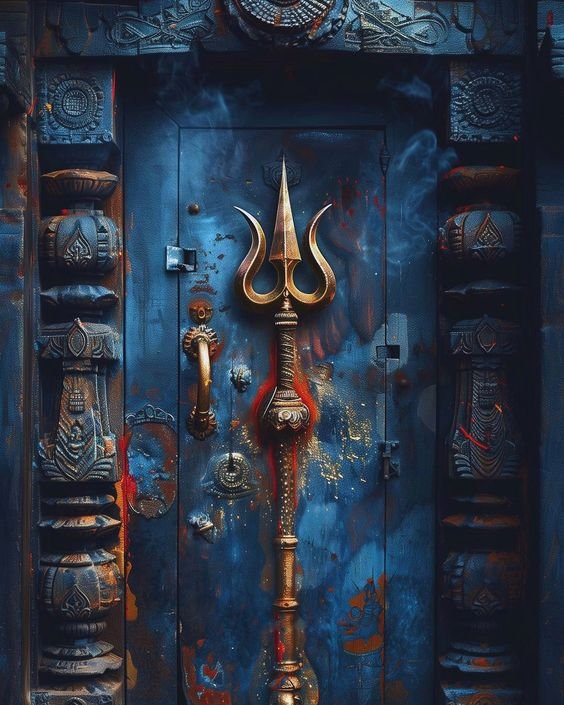
In Hinduism, though the Trishul is predominantly associated with Lord Shiva both in the scriptures and the iconographic depictions, there are other deities like Goddess Durga, Kali, and Lord Ganesha who are portrayed holding the Tirshul. Dugra is a significant Hindu Goddess and is considered to be the divine mother. The Trishul held by the Goddess in many of her iconography symbolizes her power and strength to destroy the evil and restoration of harmony in the cosmic universe. Goddess Durga’s use of the Trishul is a representation of her authority over the cosmic forces and her ability to maintain the cosmic order. Kali, the Goddess of time and destruction is another of the important deity in Hinduism. The Trishul in her hands symbolizes the goddess’s power to destroy. Her use of Trishul highlights her power and authority over the cosmic universe and the forces of its change and transformation. Lord Ganesha, also known as the elephant god, usually associated with prosperity and remover of obstacles, is sometimes seen holding the Trishul. His Trishul symbolizes the clearance of the path from any obstacles preventing a successful path towards good fortune, prosperity and spiritual growth.
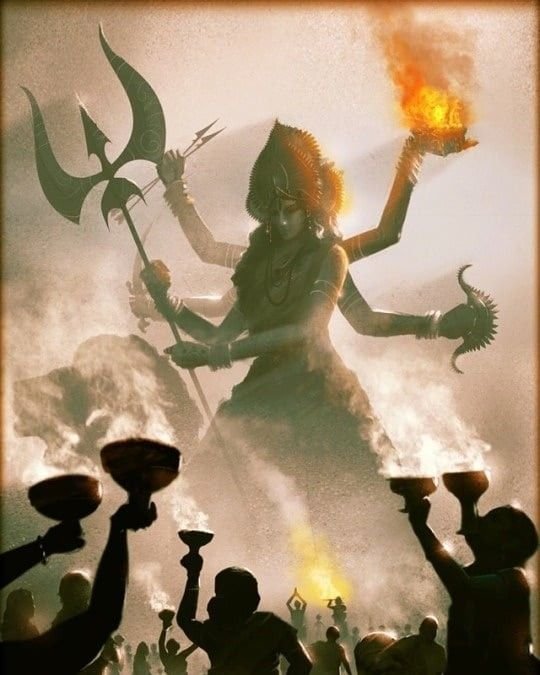
The Trishul or trident is also finds mentions apart from Hindu mythology. In Greek mythology, the trident is a symbol of importance associated with Poseidon the Sea God. In the ancient Greek myth, it is believed that Poseidon received the trident from a Cyclopes who was the blacksmith of great popularity and even moulded the helmet of Hades and Zeus’s thunderbolt. Poseidon’s three pronged spear was wielded by him to split lands with earthquakes, in the creation of rivers and causing sea storms. He is also known as the God of Horses because according to the myth, the Greek Gods competed in order to come to a conclusion as to who would rule the city of Athens. Poseidon with his trident was able to create a horse, said to be the first horse ever created in the world. In Norse mythology, the trident appears in the form of imagery on a Nordic rune. A rune was an ancient alphabet in Norse mythology, often said to consist of magical, mystic religious connotations to it by those who believed and worshipped the Nordic gods. The trident imagery called as the rune algiz was used for protection. The same images repetition eight times in a circle links the rune with Odin, a major god and becomes a symbol of protection and power.
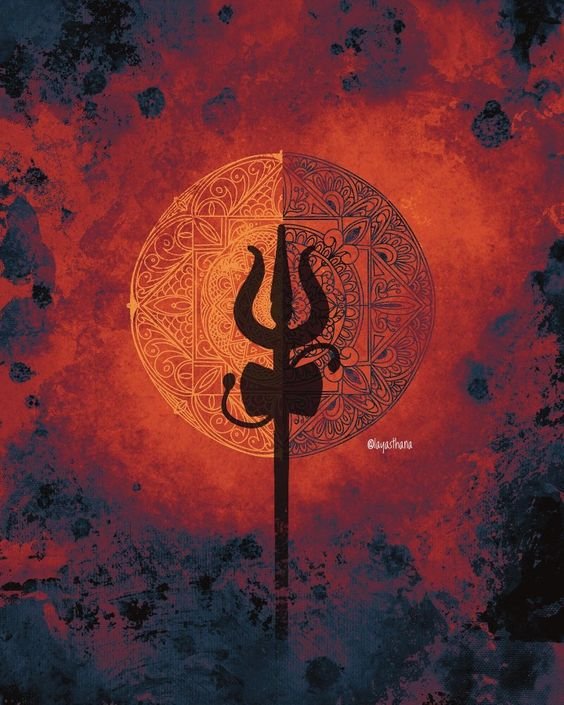
Trishul or trident, in Hinduism symbolizes everything in threes. It is a symbol of destroyer of the evil, maintainer of the cosmic harmony, and a source of great power. An important symbol of the principal god Shiva, the symbol finds itself being depicted in tales of ancient Hindu scripture of it being used to wade off the evil and at the same time being associated with other important deities of the religion, who wield the Trishul for similar reasons. In conclusion, the Trishul symbolises as a destroyer of the forces that disrupt the cosmic universe and at the same time offers protection to the devotees of the religion. Similarly, the trident holds same values as Hinduism in Norse mythology, appearing on the runes as a protection symbol. Known worldwide as a symbol that represents Poseidon, one of the major three Gods of Greek mythologies, the trident finds multiple representations in modern day art, literature and culture.

